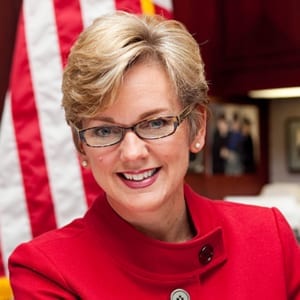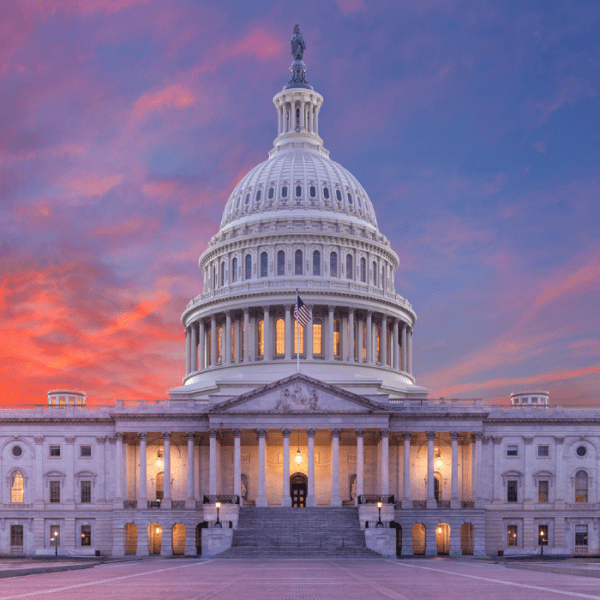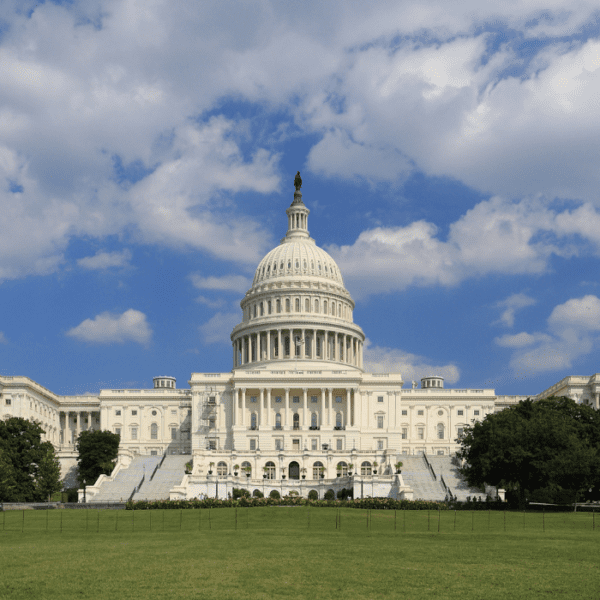President Biden has appointed an all-star roster of clean energy champions to his Administration as part of his “whole-of-the-government” approach to address climate change. These early appointments offer huge opportunities – and risks – for the hydropower industry.
The President’s focus on climate bodes well for the industry as a zero-carbon, renewable resource. At the same time however, many of the appointees have little experience in hydropower. It is unclear whether they view hydropower as a legacy technology from the 19th century or embrace it as an essential, flexible resource for powering a 21st century clean energy grid.
In this article, NHA provides insight on these appointees at the White House, U.S. Department of Energy, Federal Energy Regulatory Commission, U.S. Environmental Protection Agency, and U.S. Department of the Interior.
What It Means for Hydropower
As evidenced by the lineup below, President Biden’s initial appointees are an impressive group of climate and clean energy veterans. They have deep experience on climate policy, renewable energy development, and grid integration.
Yet their backgrounds fail to provide a clear indication of whether they will embrace waterpower in all its forms as a zero-carbon, renewable resource.
For the industry, now is a critical time for waterpower to be recognized as an essential part of the climate solution. Thirty percent of the hydropower fleet is up for Federal Energy Regulatory Commission relicensing within the next decade, a process that takes on average almost eight years and often much longer. The industry is also under severe competitive pressure, in part because it does not receive the same federal tax or state policy support as other zero-carbon electricity sources, nor do existing wholesale markets fully compensate hydropower for the flexibility and reliability services it provides.
Conventional and run-of-river hydropower currently provides 80 GWs of carbon-free capacity to the grid. Flexible pumped storage provides another 23 GWs. Together, hydropower and pumped storage also serve as force multipliers, allowing variable wind and solar to be integrated onto the grid. Moreover, hydropower is not tapped out, with proposals pending to add generation at existing dam and conduit infrastructure, improve the efficiency of the existing fleet, and build new flexible, off-river pumped storage. Marine energy technologies, such as wave, tidal, ocean current, and river hydrokinetic technologies, also have tremendous potential to contribute meaningfully to our nation’s electricity supply. The Biden Administration has the opportunity to embrace hydropower, pumped storage, and marine energy as an essential part of any climate solution.
Insight about the Appointees
President Biden’s commitment to tackle what he describes as “the climate crisis at home and abroad” is underscored by the gravitas of his most senior climate appointments. John Kerry, appointed to be the Special Envoy on Climate, will be a cabinet-level official and sit on the National Security Council. Kerry previously served as Obama’s Secretary of State, a long-standing Senator from Massachusetts, and the Democratic Party’s Presidential nominee in 2004.
He will be joined by Gina McCarthy, who was appointed to be the first White House Climate Advisor to advise Biden on domestic climate change policy and lead the White House Office of Domestic Climate Policy. She previously served as Administrator of the U.S. Environmental Protection Agency (EPA) under President Obama and served as a Massachusetts state environmental official under five Governors, including now Republican Senator Mitt Romney.
Senior staff hires to the White House Domestic Climate team include clean energy policy and grid experts, such as Sonia Aggarwal, who will be Senior Advisor to the President for Climate Policy and Innovation.
While these initial appointments underscore that the Biden Administration intends to make climate policy a signature policy priority, few of the appointments to date have particularly expertise on hydropower issues.
U.S. Department of Energy
Governor Jennifer Granholm has been appointed to serve as the next Secretary of the U.S. Department of Energy (DOE). A Harvard educated lawyer, she previously served two terms (2003-2011) as Governor of Michigan and more recently, as a political commentator on CNN. She also served on the Board of Directors for the electric bus manufacturer Proterra. In light of her deep Michigan roots, her perception of hydropower will surely be colored by the Edenville and Samford dam failures in the summer of 2020.
Joining Governor Granholm at DOE will be Kelly Speakes-Backman, appointed to be principal deputy assistant secretary for energy efficiency and renewable energy. Speakes-Backman most recently served as the first CEO of the Energy Storage Association (ESA), the national trade association for the energy storage industry. ESA focuses primarily on battery storage technologies, yet also touches upon pumped storage. In this role, Speakes-Backman demonstrated an openness to work with the hydropower industry, particularly on long-duration storage issues.
Federal Energy Regulatory Commission
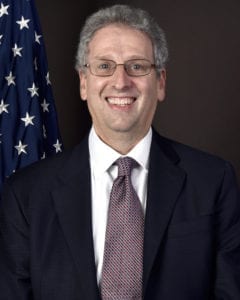
President Biden has elevated Richard Glick to be the new Chair of the Federal Energy Regulatory Commission (FERC). Confirmed as a Commissioner in 2017, Glick previously served as general counsel to the U.S. Senate Energy and Natural Resources Committee. He also served as chief lobbyist for Avangrid, a northeastern electric and gas utility and renewables developer.
As a Commissioner, Glick has argued that FERC has a mandate to maintain open, competitive markets, which will have “the effect, if not the intent, of facilitating a cleaner, less GHG-intensive energy mix.” As chair, Glick has indicated that he will prioritize: transmission reform; reassessing capacity markets; and continuing to lower barriers to clean energy resources in regulated markets.
While Glick now serves as FERC’s chair, the Commission remains dominated by three Republican Commissioners: Neil Chatterjee, James Danly and Mark Christie. Glick was, however, recently joined on the Commission by Allison Clements, who was sworn in on December 8, 2020. A lawyer and energy consultant who previously worked at the Natural Resources Defense Council, the Energy Foundation and as director of Sustainable FERC, Commissioner Clements is expected to be a strong ally of Chairman Glick. The Commission will retain its current make up of three Republicans and two Democrats until the expiration of Neil Chatterjee’s term on June 30, 2021.
U.S. Environmental Protection Agency
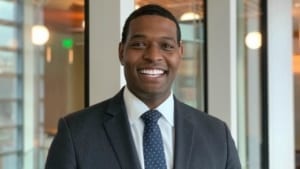
Michael Regan is President Biden’s pick to lead the U.S. Environmental Protection Agency (EPA). Relatively unknown outside of North Carolina before his nomination, Regan has led the North Carolina Department of the Environmental Quality since 2017. Prior to that, he worked for the Environmental Defense Fund and, earlier in his career, at the agency that he will now lead.
Regan will be joined by a familiar cast of EPA and Washington veterans. Dan Utech will be chief of staff, having previously served as Obama’s deputy assistant for energy and climate change and an advisor to Hillary Clinton in the U.S. Senate. Avi Garbo, who served as EPA General Counsel for Obama from 2013-2017 and most recently as Patagonia’s Environmental Advocate, will be senior counselor to the Administrator. Joe Goffman, the principal author of the Obama’s Administration’s Clean Power Plan, will return to EPA as principal deputy assistant Administrator in the Office of Air and Radiation. Vikki Arroyo has been named associate administrator for policy, after having served as executive director of the Georgetown Climate Center for 12 years.
U.S. Department of the Interior
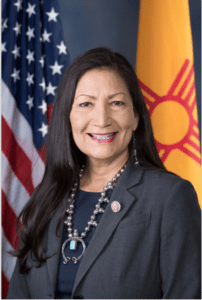
Representative Deb Haaland of New Mexico has been nominated to be the first Native American to serve in a presidential Cabinet and would be the first Native person to oversee the Department of the Interior. As New Mexico is not a large generator of hydropower, Congresswoman Haaland’s exposure to and understanding of the hydropower industry is unclear.
Joining her at Interior will be Shannon Estenoz as principal deputy assistant secretary of Fish and Wildlife, having previously served with the Everglades Foundation, World Wildlife Fund and the National Parks Conservation Association. Martha Williams will be principal deputy director of the Fish and Wildlife Service. Ms. Williams was director of Montana’s Department of Fish, Wildlife and Parks, and previously taught at the Blewett School of Law at the University of Montana. Maria (Camille) Touton will be deputy commissioner, Bureau of Reclamation, returning to Interior after serving on U.S. House Committee on Transportation and Infrastructure. She served as Interior’s Deputy Assistant Secretary for Water and Science during the Obama administration.
What’s Next
At the National Hydropower Association, our focus has been and will continue to be outreach to these appointees and their staffs. NHA has already met with the Biden transition team and is reaching out to each appointee as they are named and confirmed.
“NHA’s more than 250 member companies and NHA government affairs staff are actively taking the hydro message to Capitol Hill to educate members about how waterpower in all its forms fits into Congress’s priorities of economic recovery and infrastructure modernization,” says Jack Lincoln, chair of NHA’s Legislative Affairs Committee and Federal Affairs Manager for Northern California Power Agency (NCPA).
In addition to engaging policy makers, the association, on behalf of the industry, is continuing to build partnerships with the river and climate communities.
In October, NHA signed a Joint Statement of Collaboration on U.S. hydropower, pledging to work together with American Rivers, the World Wildlife Fund, and other environmental and river organizations to address a range of challenges, including licensing/relicensing, dam safety, and valuing hydropower’s grid services.
“The need to address climate change motivated our respective organizations to find new opportunities for collaboration,” says Jay Anders, chairman of the board of NHA and associate vice president, hydropower and hydraulic structures, for Black & Veatch Corporation. The signatories to the Joint Statement of Collaboration, resulting from participation in the Stanford University’s Uncommon Dialogue process, have agreed to work together on a variety of areas, including improving federal hydropower licensing, relicensing, and license surrender processes, Anders said.
NHA is also working with other clean energy trade associations to take the message of renewables to the new Congress and the Biden Administration. NHA has established a joint vision with the American Clean Power Association, the Energy Storage Association, and the Solar Energy Industries Association to achieve, within a decade, the target of half the electricity generated in the U.S. coming from clean, renewable resources supported by energy storage. The four associations have agreed to actively collaborate across their industry segments to achieve this target.




